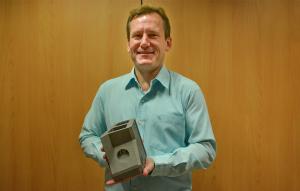3D printing for small-size components
The European Domestic Agency is investigating the benefits of 3D printing for the fabrication of smaller size (up to metre-scale) metal components. The technique seems particularly well adapted to unconventionally shaped objects or those with complex interior geometry.
The new method, known as additive manufacturing, uses computer-aided design (CAD) drawings as a starting point to directly manufacture 3D objects in a more efficient and cost-effective approach that avoids the mockups and prototypes of traditional manufacturing. The 3D printing equipment is able to read CAD data and lay down successive layers of liquid, melted powder or sheet material to form the component—a process that may be particularly well suited to some of the highly complex components required for ITER.


